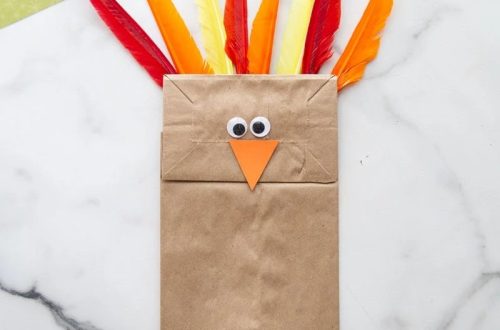The 2×2 Rubik’s Cube, also known as the Pocket Cube, might seem intimidating at first glance. But don’t worry, conquering this mini marvel is a fantastic introduction to the world of Rubik’s Cubes and a stepping stone to solving the iconic 3×3. Here are some beginner-friendly tips to break down the solution and get you cubing in no time!

Part 1: Getting Started
Understanding the Notation:
Before diving in, familiarize yourself with basic Rubik’s Cube notation. Each layer (top, bottom, front, back, left, right) has a letter assigned (U, D, F, B, L, R). A single clockwise turn is denoted by the letter followed by a capital apostrophe (F’). Counter-clockwise turns use a lowercase ‘w’ (Fw). Additionally, a double turn (two quick spins in the same direction) is represented with a number 2 after the letter (R2). This notation will be crucial for following solution steps.
The Power of Practice:
Mastering the art of solving a Rubik’s Cube requires dedication, practice, and perseverance. It’s natural for the process to feel challenging initially, so it’s important not to get discouraged if it doesn’t become intuitive right away. By allocating dedicated practice sessions—no matter how brief—and consistently engaging with the cube, solvers can gradually develop muscle memory and familiarity with the various movements and techniques. Over time, this repeated exposure and experimentation with different moves will contribute to the refinement of solving skills. As a result, solvers will find that their ability to manipulate the cube becomes more fluid and intuitive, leading to smoother and quicker solves. Embracing the learning curve and maintaining a patient, persistent approach will ultimately lead to noticeable progress and mastery of the Rubik’s Cube-solving technique.

Part 2: Conquering the White Face
Building the White Cross:
The initial step in solving the Rubik’s Cube involves creating a white cross on the top face of the cube. This requires identifying the white edge pieces and employing a straightforward algorithm—a sequence of moves—to position them in a manner where the white sticker faces upwards while matching the center sticker below in color. Numerous algorithms are accessible online for this task, with a range of complexity. It is advisable to select one that is easy to recall and comprehend, and then practice it repeatedly until it becomes almost instinctive. Through consistent practice and familiarity, the chosen algorithm will become second nature, enabling a smoother process of positioning the white edge pieces to form the initial white cross. By mastering this foundational step, solvers lay the groundwork for progressing through the subsequent stages of solving the Rubik’s Cube.
Positioning the White Corner Pieces:
Once the white cross is complete, focus on the four corner pieces. Each corner has a white sticker and two other colors. Here’s where the magic happens! Use another algorithm to maneuver these corner pieces to their rightful positions on the top layer, ensuring the white sticker faces up and the other colors match the adjacent center stickers. Again, practice this algorithm until you can execute it smoothly.

Part 3: Orienting the Last Layer
Solving the Yellow Face:
With the top layer now featuring a uniform white color, the next objective is to address the yellow face, which ultimately culminates in achieving a fully solved Rubik’s Cube. To progress, the focus should be on identifying the yellow corner pieces situated on the top layer.
Rotating the yellow corner pieces requires a specific algorithm. This ensures the yellow sticker on each corner faces up and lines up with the center. It takes practice to master this technique, but with persistence, you’ll get it. Consistent practice will make you proficient at maneuvering these corners. Eventually, you’ll be a pro at positioning the yellow face, bringing you closer to solving the cube!
Positioning the Last Layer Edges:
We’re on the home stretch! The final hurdle involves the edge pieces on the top layer, each sporting two colored stickers. Here’s the exciting part: you only need one algorithm to conquer this step! This magic sequence will strategically move the edges around until they snap into their rightful positions, completing the cube entirely.

Practice this final algorithm to master the smooth flow of the moves. With dedication, you’ll witness the edges click into place, solving the 2×2 Rubik’s Cube! Celebrate this accomplishment – you’ve unlocked the secrets of the mini cube and are ready to explore the vast world of cubing!
Part 4: Beyond the Basics
Advanced Techniques:
The beginner method is a stepping stone to cubing mastery! Want to solve the 2×2 even faster? Advanced techniques like CFOP (Fridrich Method) or Roux, originally designed for the 3×3, can be adapted for the smaller cube! These methods focus on solving the cube in far fewer moves, dramatically improving your solving times. Imagine solving the 2×2 in seconds – that’s the power of advanced techniques! While they involve memorizing more algorithms, the payoff is huge. This opens a door to a world of new challenges, keeping cubing exciting as you shave seconds off your personal bests.
Join the Cubing Community:

The world of cubing is not only a challenging and rewarding endeavor but also a vibrant and welcoming community. Across various online platforms, there are forums, social media groups, and dedicated communities where enthusiasts come together to share their passion for Rubik’s Cubes. These spaces offer opportunities to connect with other cubers from around the globe, enabling the exchange of valuable tips, techniques, and insights. If cubing becomes a passion, there are organized competitions and events waiting for you! These gatherings bring together people who share your fascination with the Rubik’s Cube. By joining and participating in these communities and competitions, cubers can foster connections, gain inspiration from phenomenal speed solvers, and immerse themselves in a supportive network of like-minded individuals, ultimately enhancing their own skills and contributing to the collaborative and engaging world of cubing.
Remember, the journey of solving a Rubik’s Cube is about the fun and challenge. With these beginner-friendly tips, a little practice, and a dash of curiosity, you’ll be solving the 2×2 in no time, ready to tackle the bigger challenges and join the exciting world of cubing!




